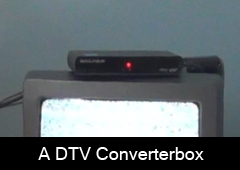

There is a common misconception in Canada that the only way to receive television is to subscribe to a cable or subscription satellite service. The fact is that it is possible to receive television both over-the-air with an antenna and via some satellites services for free and legally. I have devoted this page to explaining how Free To Air and Over the Air television work.
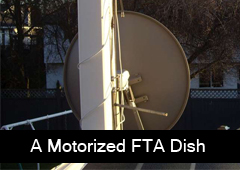
There are hundreds of television channels available unencrypted and for free if you have the right equipment to pick them up. There is a lot of confusion surrounding FTA right now and hopefully I can shed some light on what ' s what in the satellite world. Free to Air is a form of satellite television that involves the reception of unencrypted television channels from some of the various satellites that orbit North America. FTA is 100% legal and can be one heck of a lot of fun.
FTA should not (as many people seem to do) be confused with satellite piracy. Satellite piracy involves the theft of encrypted Dish Network and Bell TV channels; it is illegal and involves the modification of legit hardware. The confusion stems from the fact that satellite pirates modify the firmware of legitimate FTA boxes in order to facilitate signal theft. If you know someone who says they have " FTA " and enjoy free movie and premium channels it probably means they are stealing satellite TV.
There are literally hundreds of network feeds, international broadcasters, regional networks,
religious broadcasts, and even some cable channels. Some of the most popular channels include
AlJazeera English, Jewish-News-One, CCTV News, NBC-HD* History, CNC World, RTV, Russia Today, RTV, and PBS HD*.
A complete list of legitimate FTA channels can be found here.
*Note: HD channels require a special receiver to display. HD receivers are typically more expensive then SD receivers.
**FTA channels are spread out accross multiple satellites in the sky - to receive all available channels multiple
dishes or a motoized system is required.
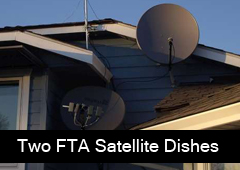
A basic FTA system* can be assembled for less than $200. All you need to get up and running is a 33 "
(or larger) dish with linear LNB, RG-6 coaxial cable, and an FTA receiver. When putting together your first
system you aren't going to need a fancy receiver with all the bells and whistles, in most cases a used
system can be found for about $75. One feature that is very useful to have is blindscan. Blindscanning
means you can search a satellite for active frequencies without having to enter them manually - a huge
timesaver.
*Note: I consider a basic FTA system to consist of 1 dish and 1 standard definition receiver.
There are, of course, those who like to go all out when it comes to FTA. Some upgrades that are commonly made to an FTA system are:
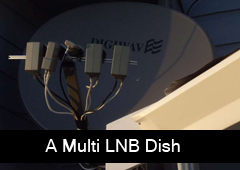
Back in the 50's and 60's the only way to receive television programming was through an antenna. In the early days of TV these antennas needed to be large and placed quite high up in order to receive any programming at all. Back when television was first being established there were only 12 channels: 2 through 13. As the broadcasting medium became more popular, however, it be came clear that more broadcast channels would be needed to facilitate the influx of license applications. Broadcast television was originally allocated 82 channels: 2 through 83, but when cellular telephones became popular channels 69 through 83 were taken away from TV stations and re-allocated for cellular telephone service. In 1941 a standard for television called NTSC was adopted. This standard of broadcasting remained unchanged for over 50 years.
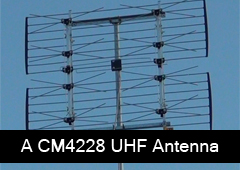
Over the past five years there has been an ongoing switch from analog television to digital around the world. Digital transmissions use a lot less "space" on the radio spectrum and offer a much higher quality image. In both Canada and the US governments have mandated that all full-power television stations shut down their analog over-the-air signal and transmit digital-over-the-air signals only. Believe it or not this is good news for the consumer as digital signals are often High Definition and they can still be received with the same old antenna and without paying for a cable/satellite/IP television service. The core technology is exactly the same as the early 50's - television stations broadcast a signal from a transmitter high atop a tower and the consumer receives the broadcast with set-top rabbit ears or a rooftop antenna. The only difference is that now the signals are digital.
The most important question that most people have is "what channels can I receive?" The answer is that all basic, local channels should be available. If you reside in Canada then this means you should be receiving Global,
CBC, CTV, CBC French (if available) and CTV2 (if available). If you reside in the United States then channels like ABC, NBC, CBS, PBS, and FOX should be available. In most regions there will be other local stations that
you can receive as well. If you're lucky enough to live near the Canadian/US border then you will likely be able to receive broadcasters from both sides of the border.
 If you watch a lot of programming on specialty networks like HBO, Discovery Channel, CNN, etc. then you may find that an over-the-air-only setup may not be for you, however many people have a basic cable/satellite subscription
and augment the specialty channels with high quality, high definition programming available for free with an antenna.
If you watch a lot of programming on specialty networks like HBO, Discovery Channel, CNN, etc. then you may find that an over-the-air-only setup may not be for you, however many people have a basic cable/satellite subscription
and augment the specialty channels with high quality, high definition programming available for free with an antenna.
The basic equipment requirements for over the air reception are pretty simple:
